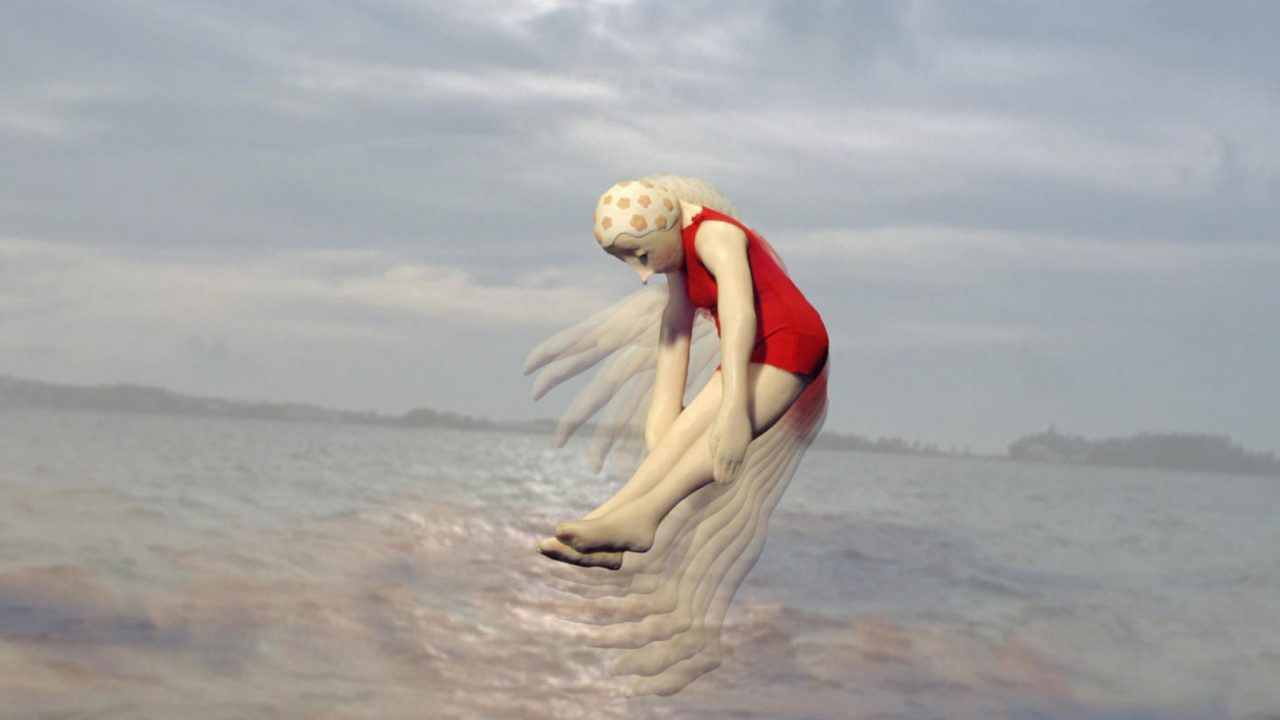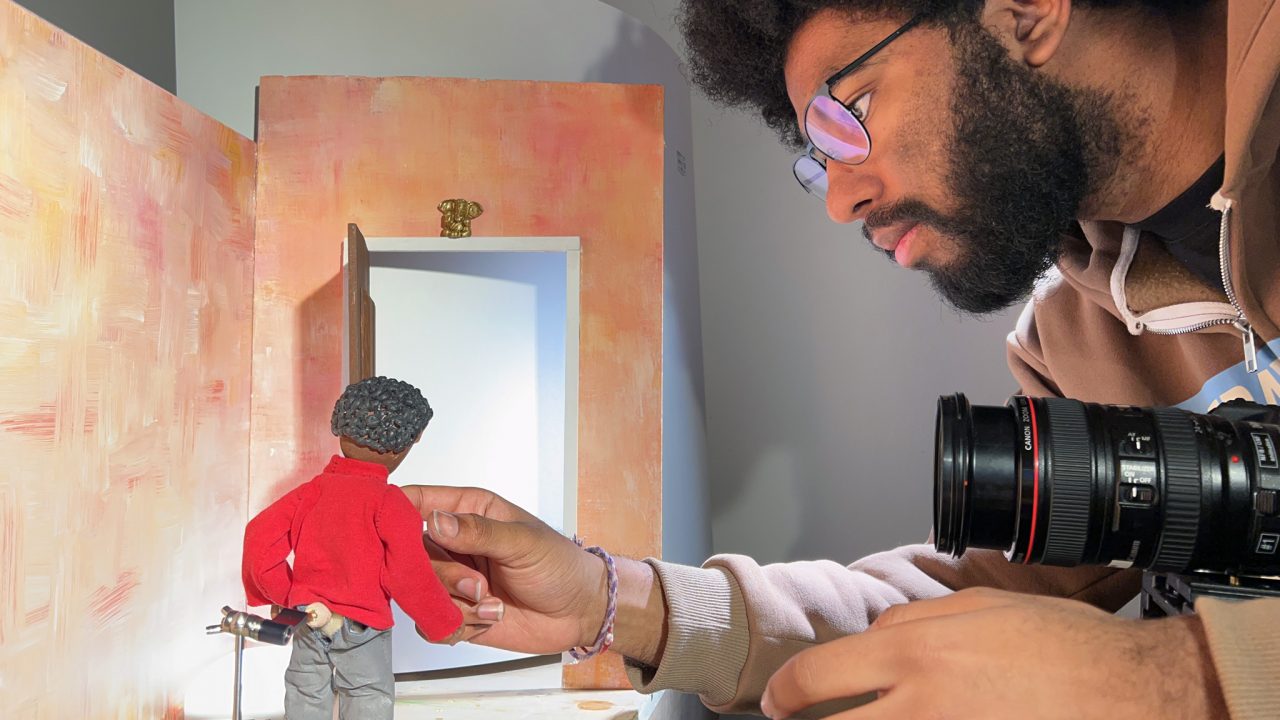
Mini-Lesson – Expressions of Creativity
Mini-Lesson – Expressions of Creativity
Mini-Lesson – Expressions of Creativity
Themes: Art, Visual Arts, Film and Video Production, Film Animation, Identity
Age: 15–17
Keywords: Exploring Creativity
Summary: Have you ever wondered how great artists and innovators come up with brilliant ideas? Is creativity a talent that people are born with, or is it a skill that can be honed through practice and repetition? The activities in this lesson explore the question of creativity through a series of three one-minute films: Pierogi Pinch, Eaude and Orange.
Activity 1. Pierogi Pinch – Creativity: Skill or Talent?
Pierogi Pinch, Kiarra Albina, provided by the National Film Board of Canada
Guiding Question: Is creativity a talent, a skill, or neither?
Summary: Made using hand-drawn animation, Pierogi Pinch explores the origin of creativity through the ritual of making pierogies. In the process, the young woman in the film receives inspiration from the presence of her grandmother. The protagonist struggles to make pierogies until they finally receive a breath of inspiration from the grandmother.
This activity will allow students to experience the concepts of creativity and inspiration.
Instruct students to fold a piece of paper into six squares.
Digital accommodation: This can also be done using the Tables feature in a word-processing document.
Advise students to express their answers to the questions below in whatever way speaks to them. This could be in the form of pictures, words or colours.
Instruct students to use one square per question to respond.
Ask students the following questions and allow a two-minute response time:
- What do you think creativity means?
- Is cooking an expression of creativity? Why or why not?
- When are you most creative?
- Have you ever felt blocked in the process of creating something?
- What did you do to overcome this block?
- Where do you think creativity comes from?
Tools: Notebook or a sheet of paper for each participant and pens or markers.
Participants: Solo.
Time: Two minutes per square.
End
In pairs, have students share their paper square and discuss their answers.
As a class, discuss how the process of answering questions creatively could connect to the young woman’s process of creativity in the film.
Activity 2. Eaude – The Visual Language of Moments
Eaude, Thea Pratt, provided by the National Film Board of Canada
Guiding Question: Where does creativity come from?
Summary: Eaude explores the series of moments that make up a dive. This film examines one space where creativity can be found, and may inspire students to contemplate the use of visual language.
The creator of this short, Thea Pratt, chose to explore the act of diving through a series of poetic images leading to the moment the diver hits the water.
The first tool we turn to when we want to explain something is words; words may be derived from images, but each is a distinct method of communication. This exercise underlines the importance and practicality of being able to express yourself in a visual language. It also explores the concept of finding creative inspiration in small moments.
Have students draw out the visual details of a single moment of their choice on a single sheet of paper.
Digital accommodation: This activity can also be completed using a digital whiteboard or using the pen tool in a word-processing program.
Tools: Notebook or a sheet of paper for each participant and pens or markers.
Participants: Solo or groups of any size.
Time: 10-15 minutes.
End
Post the images in your digital or physical classroom and have students conduct a gallery walk. Encourage students to give respectful peer feedback.
Activity 3. Orange – Alternative Uses
Orange, Sylvie Trouvé, provided by the National Film Board of Canada
Guiding Question: What is creativity?
Summary: The animated short Orange demonstrates the part that divergent thinking can play in creativity. Orange poses some interesting questions: What if buildings pulsed, trees tapped out beats, or shadows could whistle a tune?
Just as the objects in the film have alternate uses, students will be encouraged to embark on their own journey of divergent thinking.
Explain that divergent thinking is the ability to generate ideas or solutions from a single idea or a piece of information. This skill is thought to be one of the most important factors in creativity.
Have students come up with as many ideas as possible on how one might use a given item, within a time limit of three minutes. For example: a brick that is normally used for building could also be used for self-defence, as a door stop, in a flower bed, etc.
Digital accommodation: This activity can be completed using a word-processing document.
Tools: Notebook or a sheet of paper for each participant and pens.
Participants: Solo or groups of any size.
Time: Three minutes + a few extra for presenting.
End
Have a representative from each group present their ideas for each item chosen.
Take Action
Now that students have had an opportunity to explore and experience the subject of creativity through words, images and divergent thinking, have students create an art piece that answers the question:
What is creativity?
*An art piece could take any form of student expression.
Katherine Kohler is a Learning Designer at the University of Fraser Valley, a freelance educational content creator, and a part-time media teacher at the North Vancouver District School Board. With a passion for film, creativity and culture, she previously taught Film within the International Baccalaureate program for six years. She enjoys inspiring young filmmakers to follow their passions and create their own path of creativity. A lifelong learner, Katherine has a degree in English from York University, a degree in Education from U.O.I.T., and a diploma in Book and Magazine Publishing from Centennial College. She has just completed a Master of Education in the Contemplative Inquiry Program at Simon Fraser University.
Pour lire cet article en français, cliquez ici.
Discover more Mini-Lessons | Watch educational films on NFB Education | Watch educational playlists on NFB Education | Follow NFB Education on Facebook | Follow NFB Education on Pinterest | Subscribe to the NFB Education Newsletter



